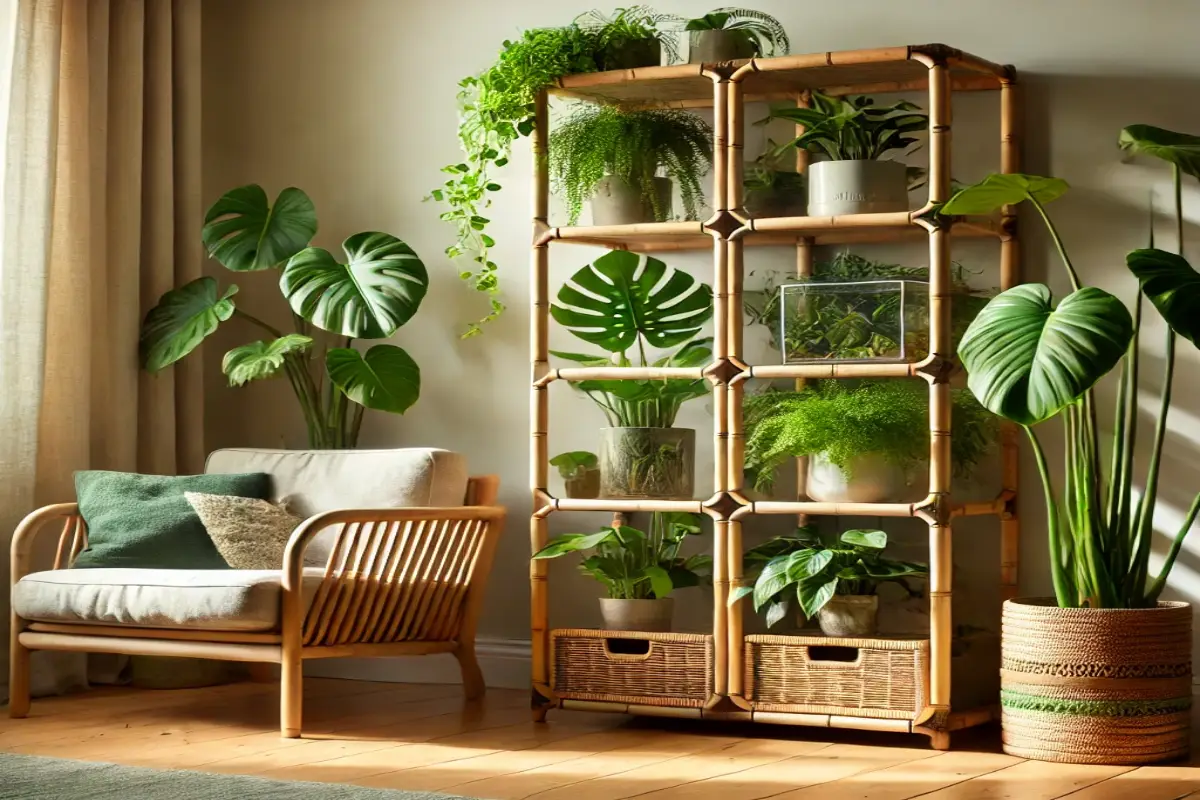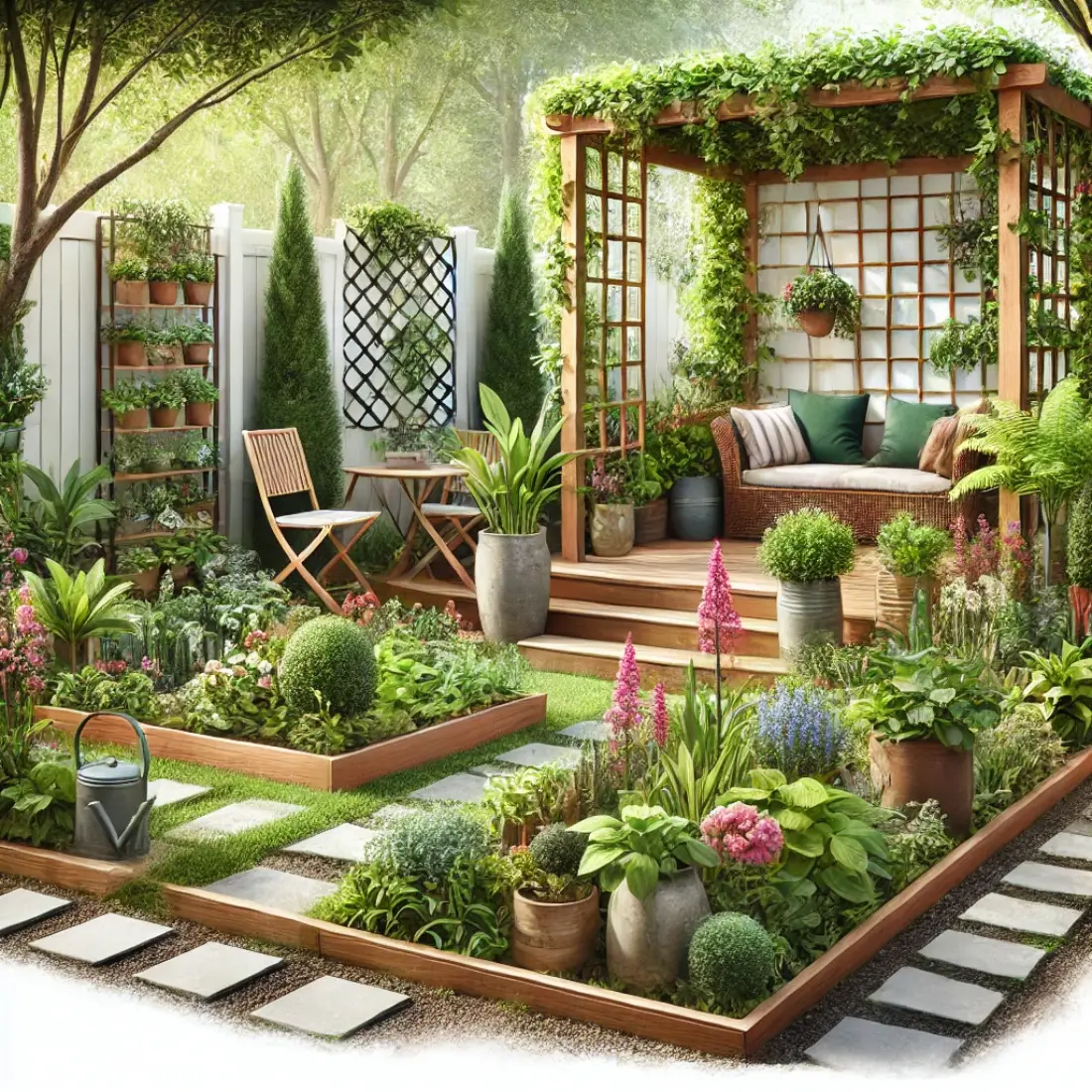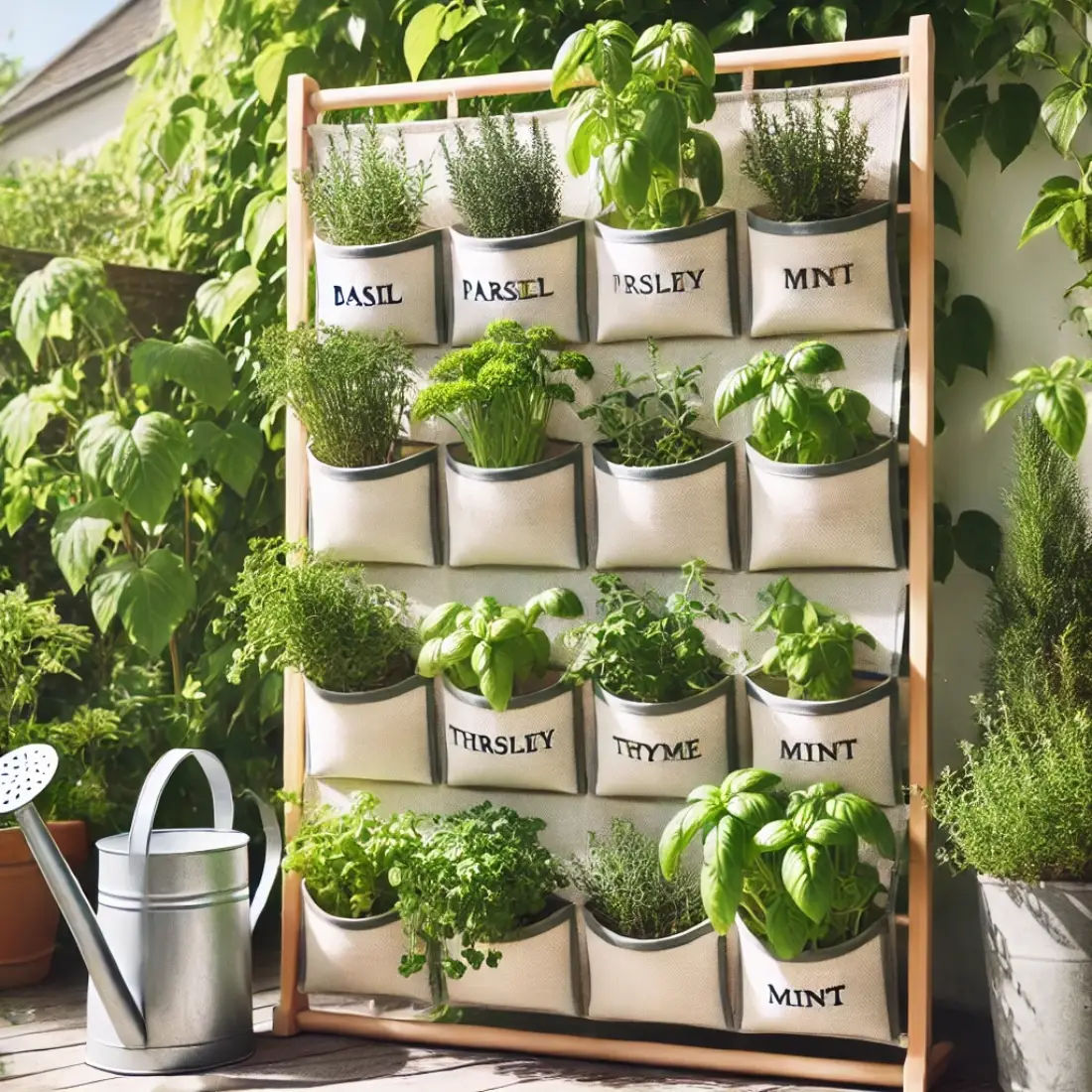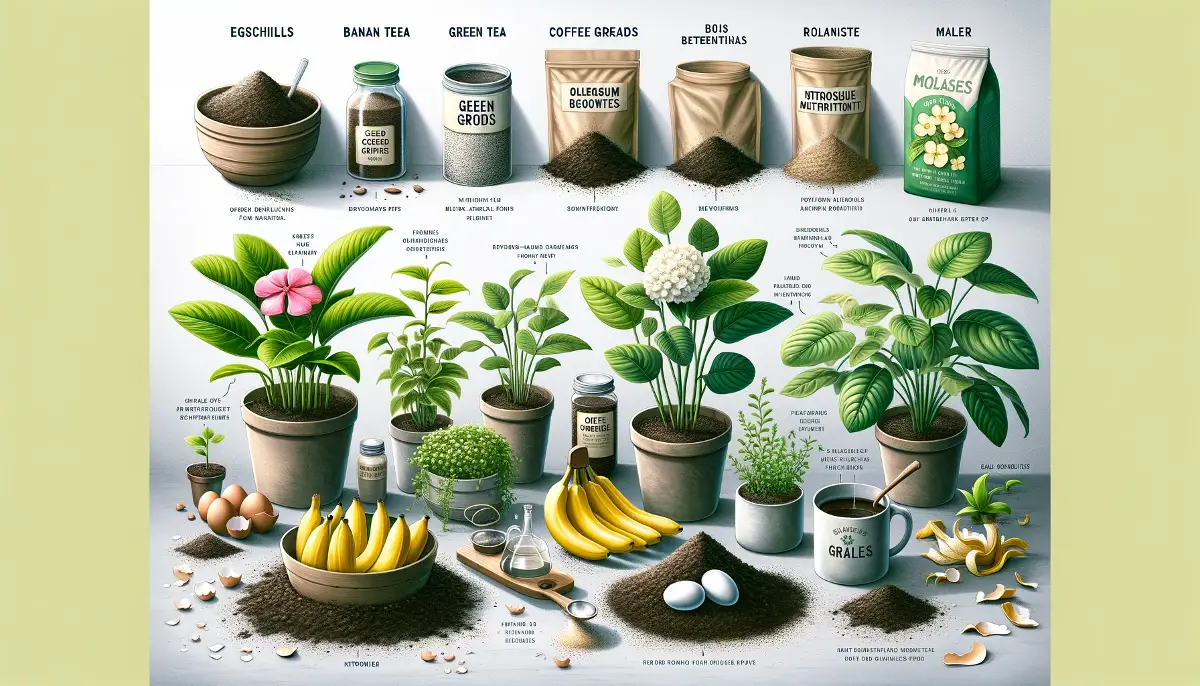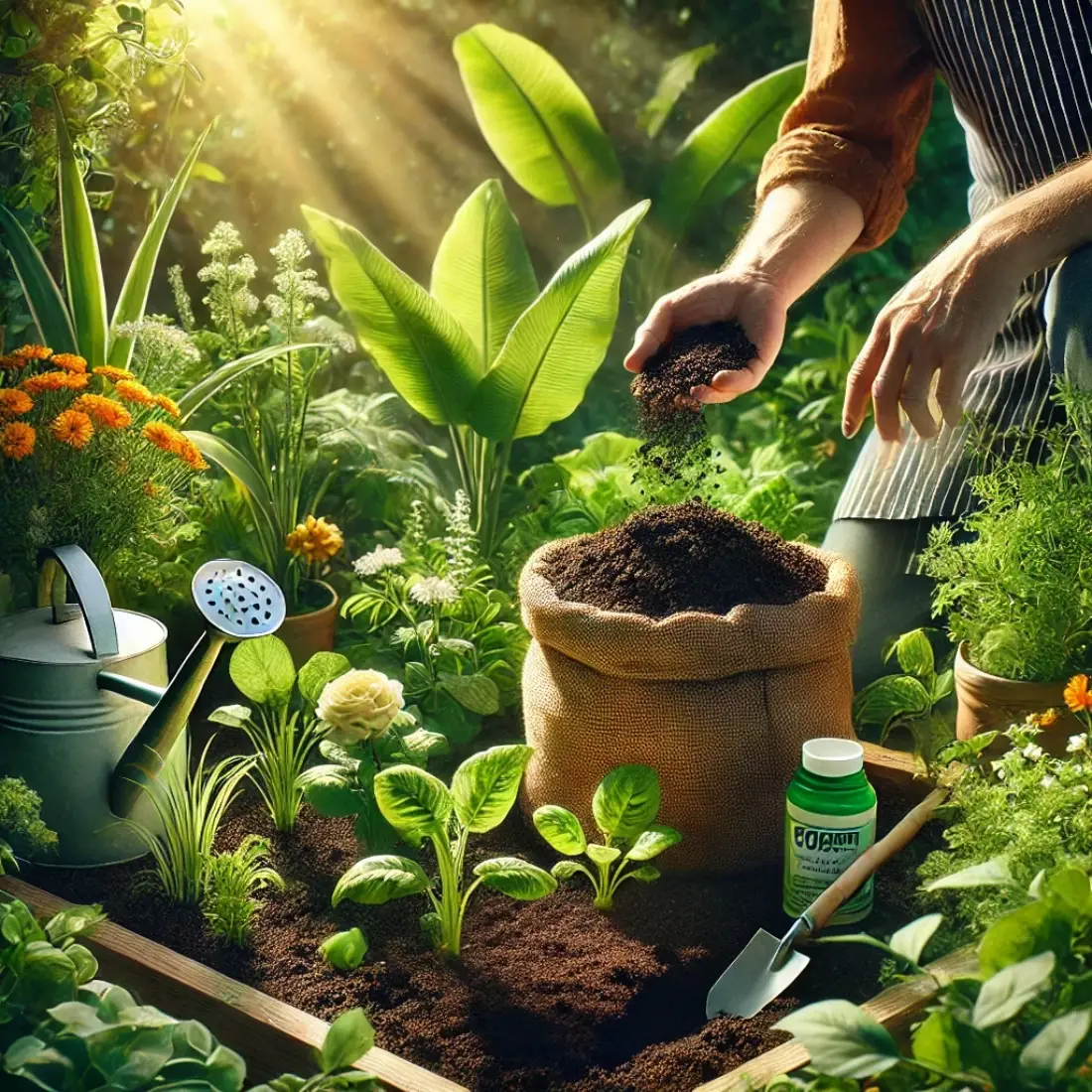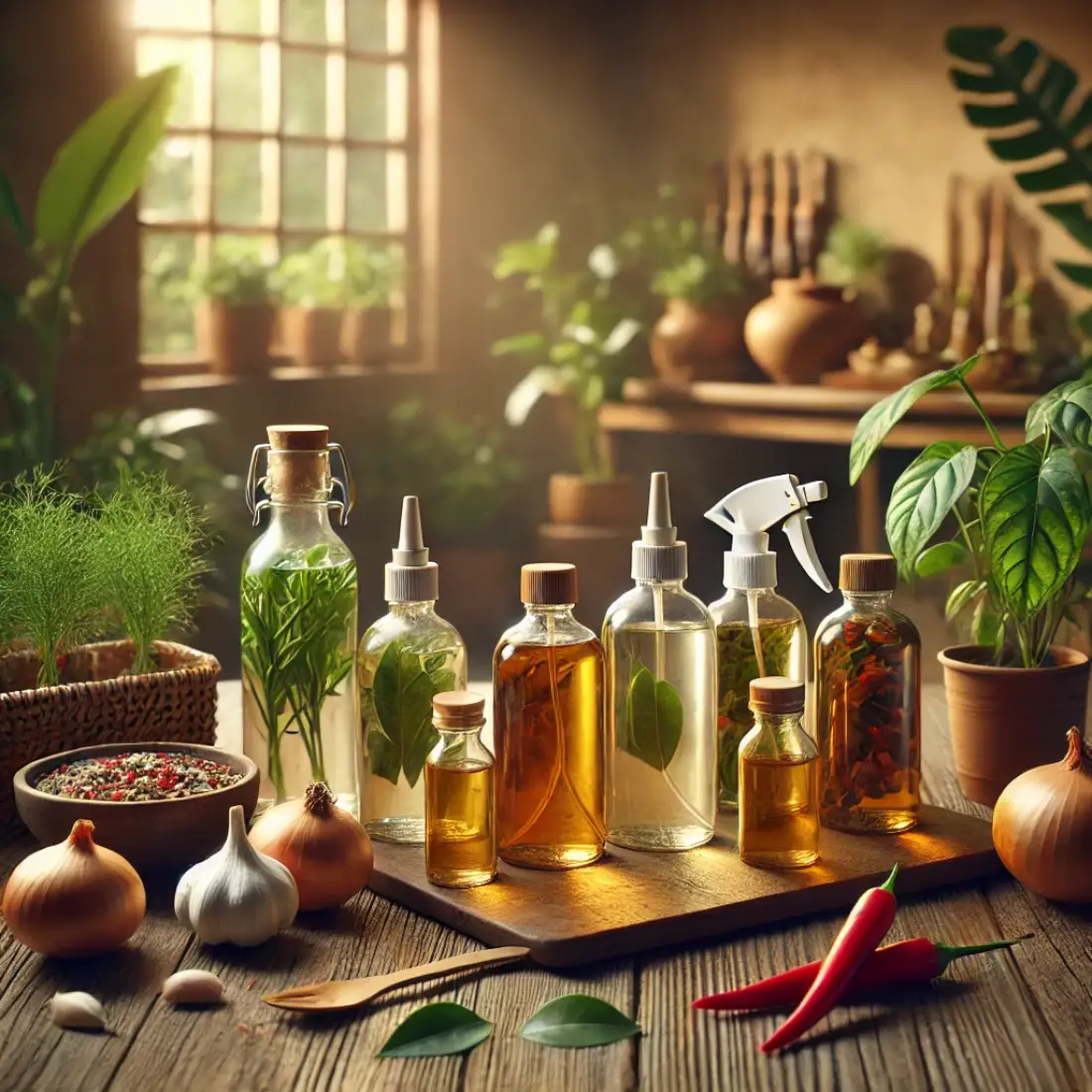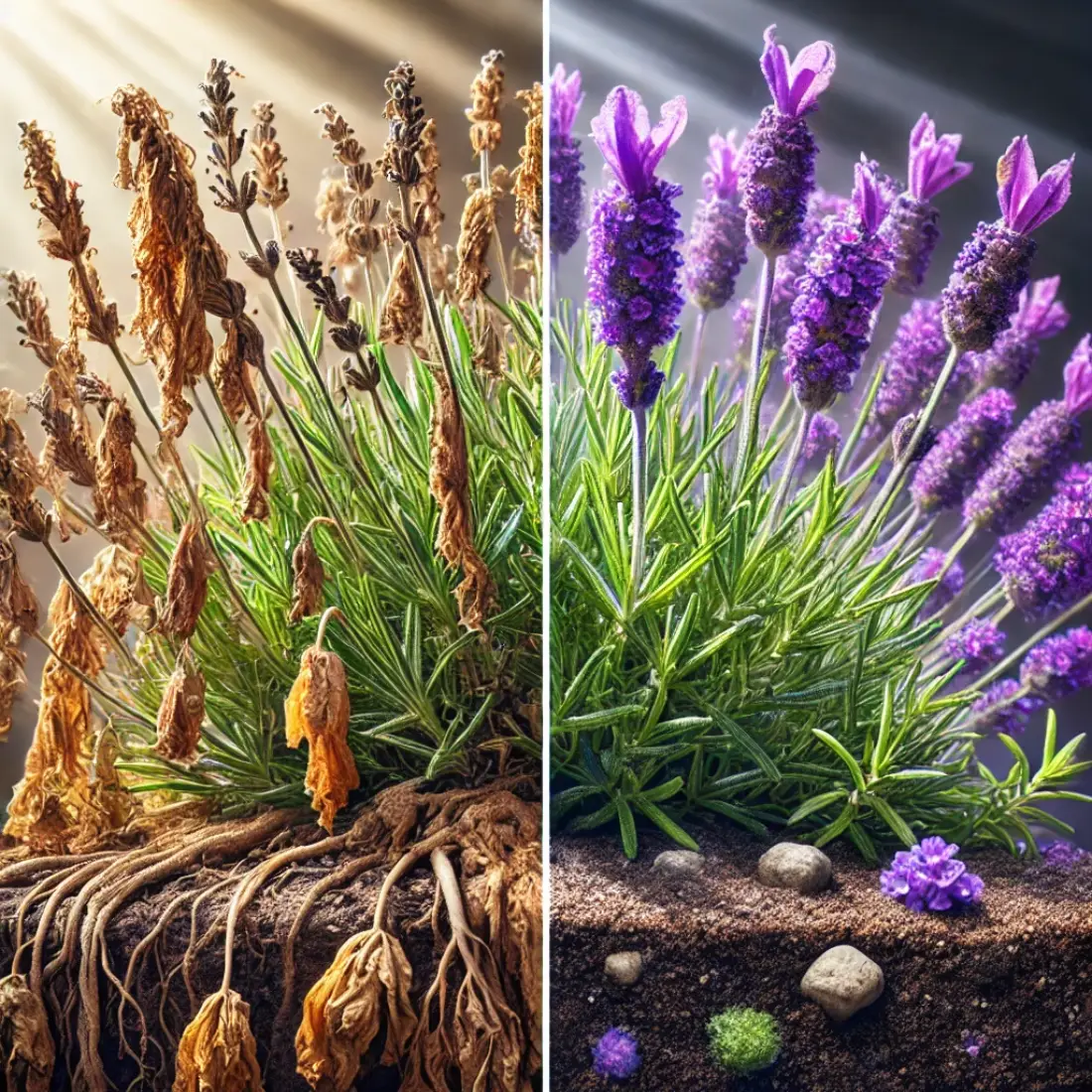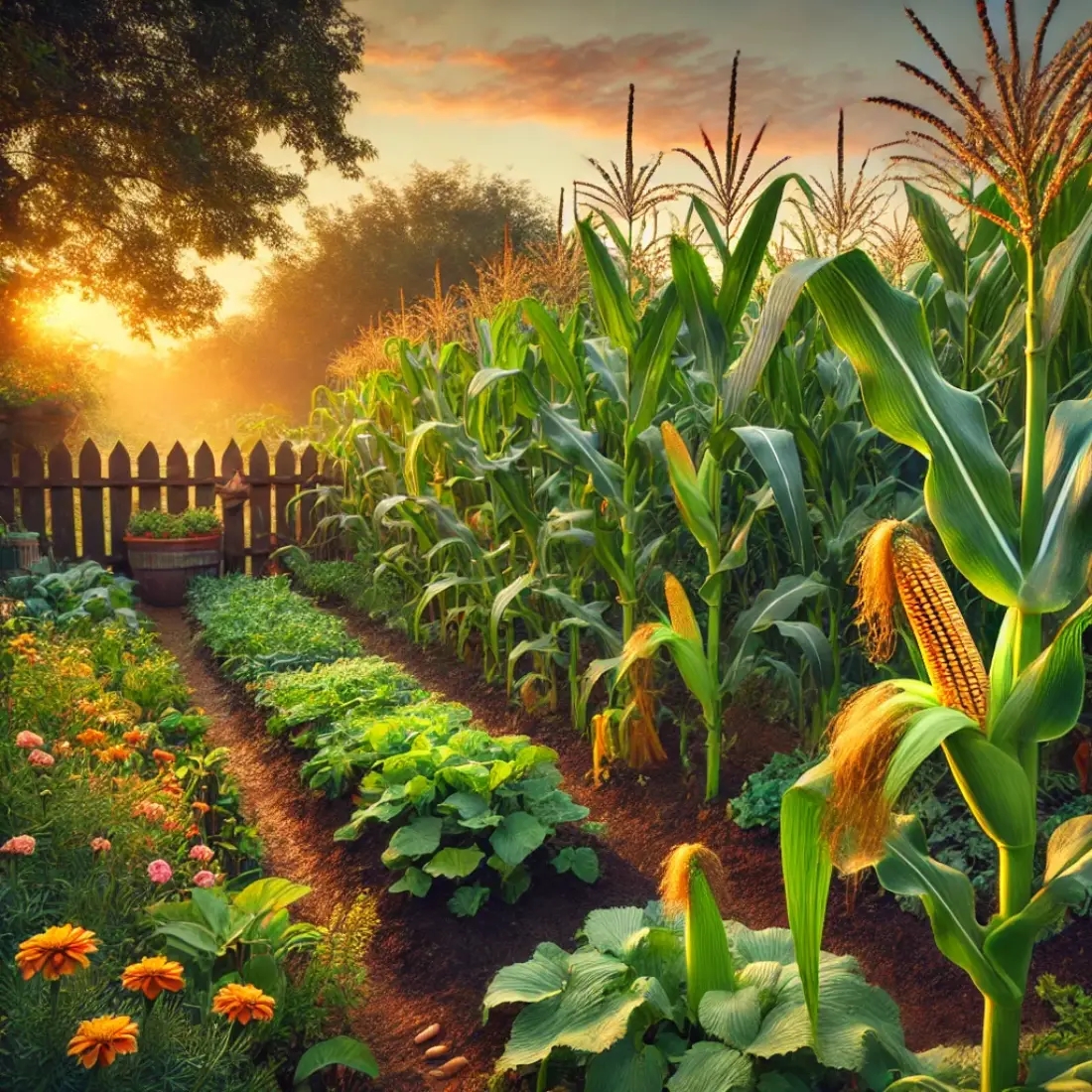A DIY plant cabinet made from organic materials can bring life, charm, and eco-friendly vibes to your space.
Whether it’s bamboo shelves, a rattan design, or reclaimed wood, these cabinets are perfect for displaying your greenery while maintaining a natural aesthetic. In this article, we’ll guide you step-by-step through crafting your own organic plant cabinet, ensuring you create something functional, beautiful, and planet-friendly.
- DIY plant cabinets are perfect for creating a sustainable home while showcasing your plants.
- Organic materials like reclaimed wood, bamboo, and rattan enhance the natural look of your space.
- With proper care, a plant cabinet made from organic materials can last for years while elevating your interior décor.
Why DIY Plant Cabinets Are a Game-Changer for Home Décor
Plant cabinets are trending for good reason—they’re the perfect blend of beauty and functionality. Here’s why they’re worth the effort:
- Sustainability First: Using organic materials reduces waste and promotes eco-friendly living.
- Customizable Designs: Tailor the size, shape, and style to fit your space perfectly.
- Healthy Living: Plants improve indoor air quality, and an organized cabinet keeps your greenery thriving.
Top Organic Materials for Your DIY Plant Cabinet
Choosing the right materials is key to creating a durable and stylish cabinet. Here are some eco-friendly options:
1. Reclaimed Wood
- Sustainable, durable, and full of character.
- Ideal for frames and shelves.
- Pro tip: Sand and seal the wood for a polished look that resists moisture.
2. Bamboo
- Lightweight yet strong, making it perfect for compact cabinets.
- Renewable and easy to work with.
- Great for creating sleek, modern designs.
3. Rattan and Wicker
- Adds a boho-chic aesthetic while being sturdy.
- Perfect for accents, panels, or entire shelves.
- Pro tip: Choose tightly woven rattan for better durability.
4. Coconut Coir
- A natural liner that retains moisture, perfect for plant shelves.
- Biodegradable and easy to cut into custom shapes.
5. Sheep Wool
- Offers insulation and softness.
- Can be used as padding for delicate plants or decorative liners.
Design Ideas for DIY Plant Cabinets
Here are some ideas to inspire you:
The Minimalist Vertical Garden
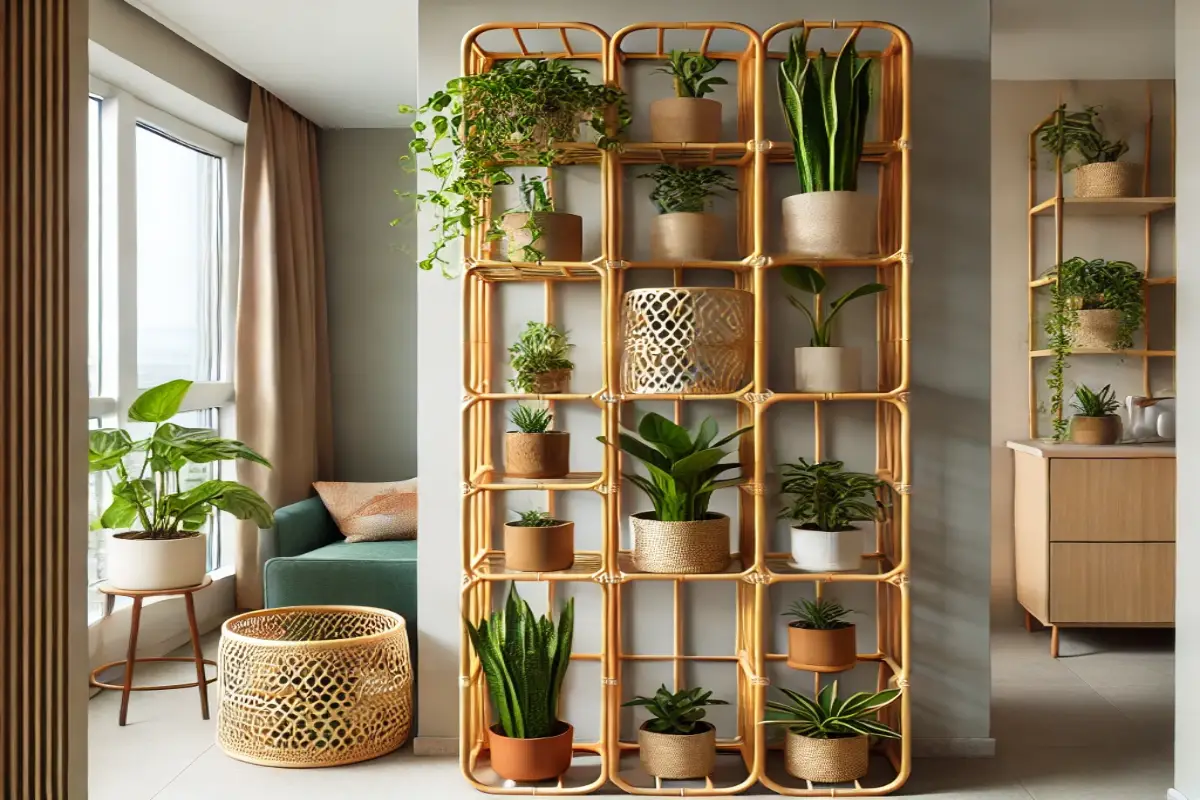
- Tall, narrow cabinets with multiple shelves to save space.
- Great for small apartments or compact corners.
Glass-Front Greenhouse Style
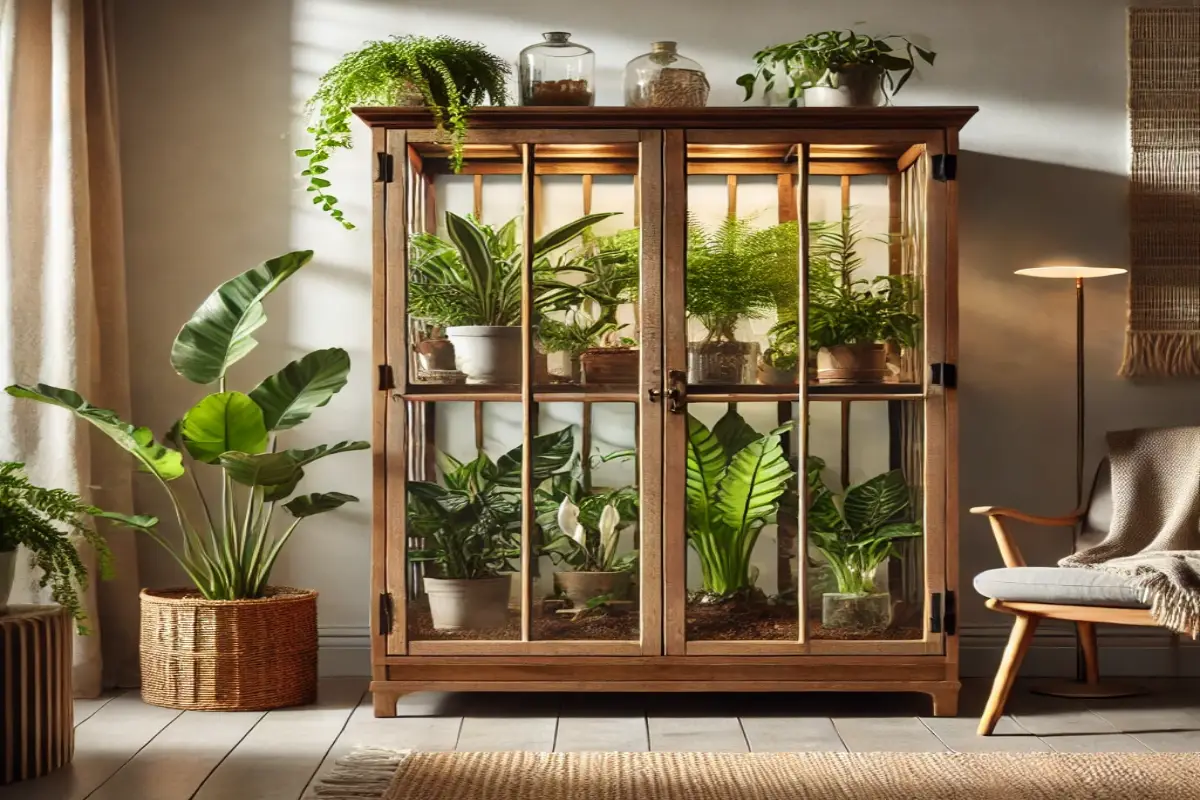
- Incorporate glass doors to trap humidity for tropical plants.
- Ideal for ferns, calatheas, or orchids.
Modular Plant Cabinets
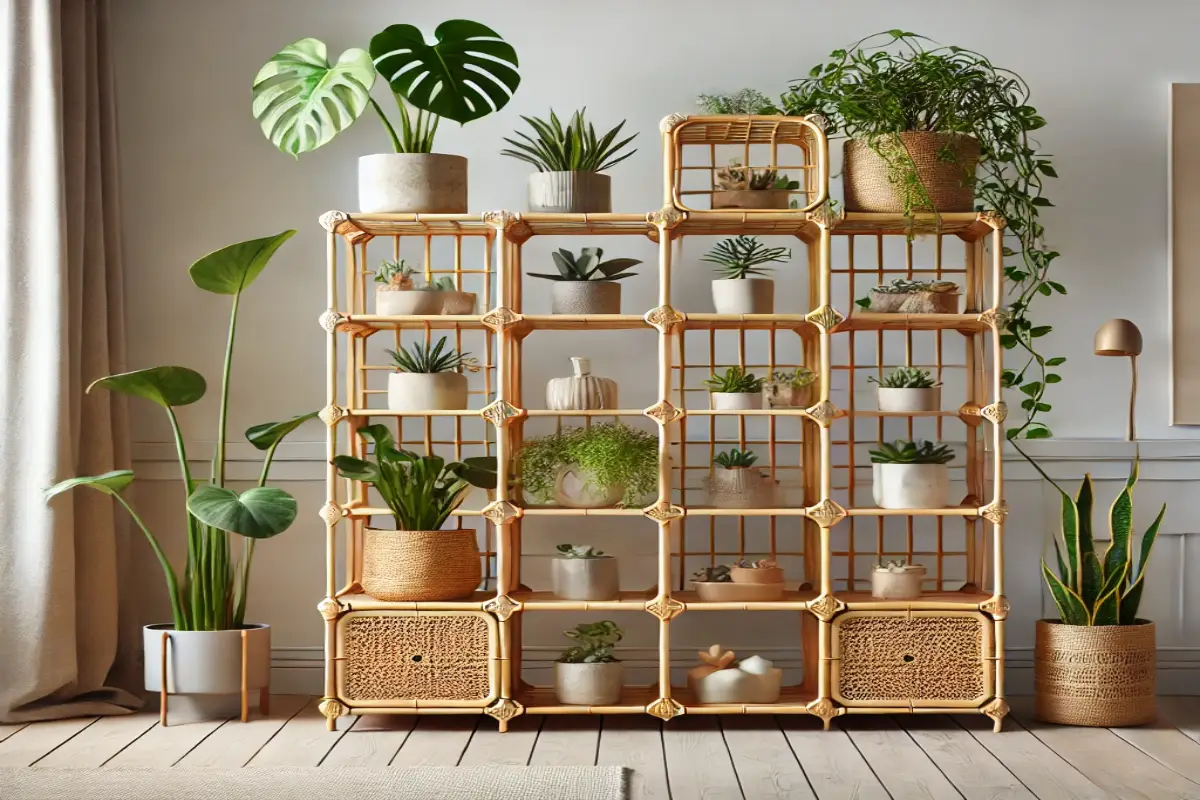
- Flexible designs that allow you to rearrange or add shelves.
- Perfect for plant collectors who frequently update their displays.
Rustic Reclaimed Wood Look
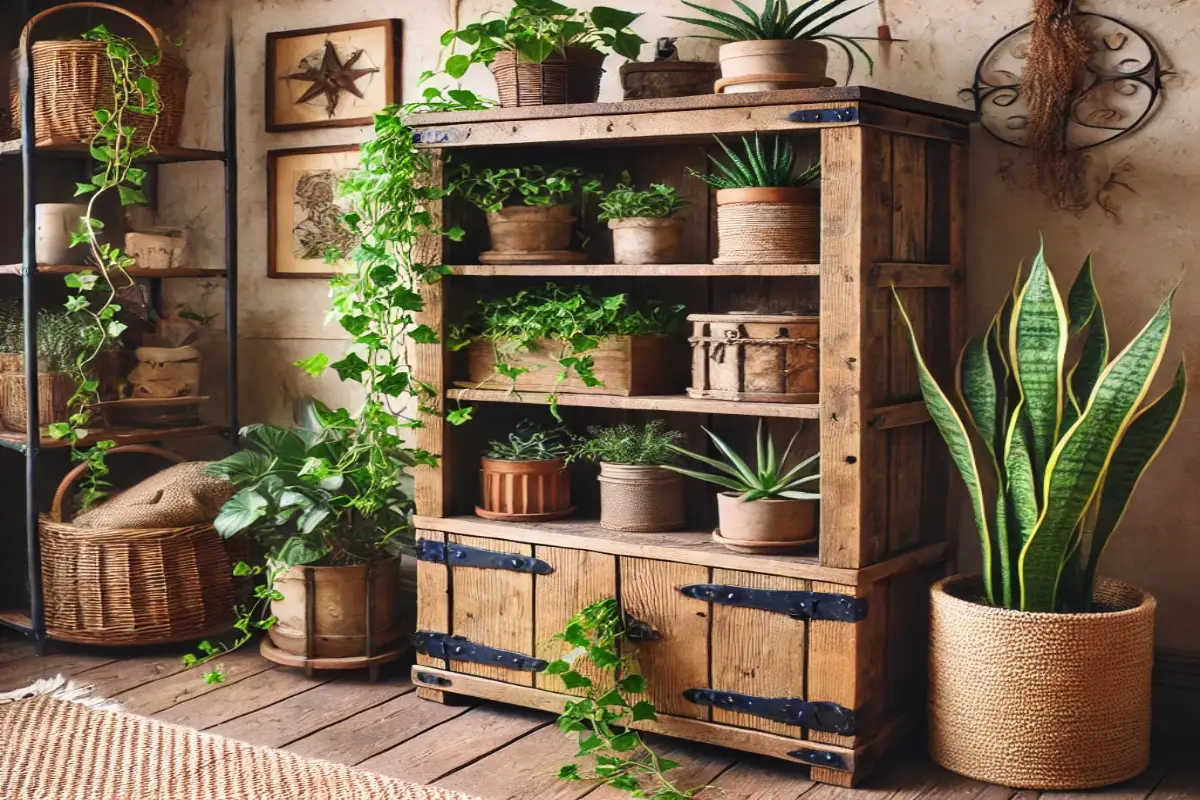
- Combine reclaimed wood with rope accents or black hardware for a farmhouse feel.
Step-by-Step: How to Build Your Organic DIY Plant Cabinet
Materials You’ll Need
- Reclaimed wood or bamboo for the frame.
- Rattan sheets or wicker for panels.
- Coconut coir for shelf liners.
- Tools: Hammer, saw, measuring tape, sandpaper, screws, wood stain.
Instructions
1. Build the Frame
- Measure and cut your wood or bamboo to create the cabinet’s skeleton.
- Assemble the pieces using screws, ensuring stability.
2. Add Shelves
- Attach evenly spaced shelves for your plants, leaving room for taller pots.
- Use coconut coir liners to protect the wood from water damage.
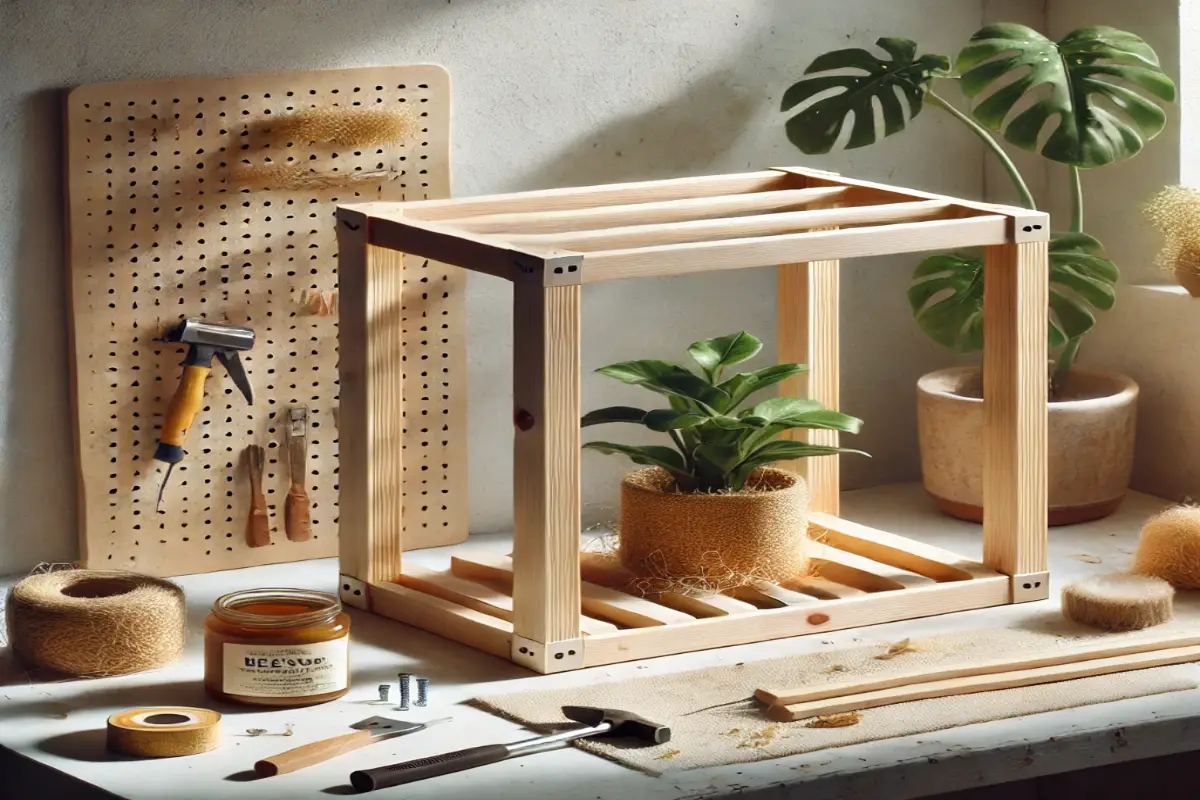
3. Decorate with Organic Accents
- Wrap panels with rattan or wicker for a textured, natural look.
- Use rope or bamboo strips as finishing touches.
4. Protect with Natural Finishes
- Apply beeswax or a non-toxic wood stain to seal the wood and enhance its natural beauty.
How to Style and Care for Your Plant Cabinet
Plant Selection
- Best Plants for Low Light: Pothos, snake plants, ZZ plants.
- Humidity-Loving Plants: Ferns, peace lilies, monstera.
Styling Tips
- Mix plants of varying heights for visual interest.
- Add decorative pots or baskets for extra style.
- Include small LED grow lights if natural light is limited.
Maintenance
- Dust the cabinet regularly to keep it looking fresh.
- Wipe spills immediately to protect the organic materials.
- Rotate plants to ensure even growth.
FAQs for DIY Plant Cabinets
What are the most eco-friendly materials for a DIY plant cabinet?
Reclaimed wood, bamboo, rattan, coconut coir, and sheep wool are all sustainable, durable, and visually appealing materials for a plant cabinet.
Can I make a DIY plant cabinet without power tools?
Absolutely! Many organic materials like rattan and bamboo are easy to work with using hand tools like saws and hammers.
How do I keep plants healthy in a cabinet?
Ensure proper ventilation, use organic liners like coconut coir to retain moisture, and choose plants suited to your cabinet’s light and humidity levels.
What kind of finish should I use on organic materials?
Non-toxic wood stains, natural oils, or beeswax are excellent choices to protect and enhance the look of organic materials.
How can I make my plant cabinet unique?
Add personal touches like painted designs, LED grow lights, or decorative hardware to make your cabinet one of a kind.

